Thirty-year electrical engineer's calculations prove the face on Mars is an artificial object
"The face on Mars" has been a mystery since 1976 and has become one of the most recognizable objects on the red planet. This happened after the first published photos of Mars, obtained from the Viking-1 station with a resolution of 250 m / pixel. However, representatives of the space agency Face is considered a normal weathered hill in Kydonia-a region in the northern hemisphere of the planet, despite the fact that the hill looks like a stone statue of a human face.
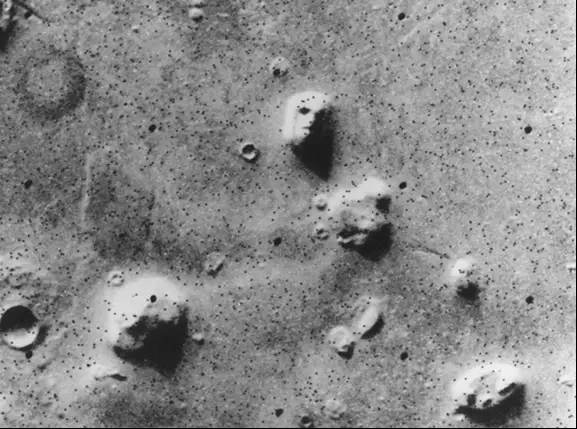
A face on Mars: a photograph taken by the Viking 1 station in 1976. Author: NASA's Viking 1-Viking 1 Orbiter, Images F035A72
Since then, the controversy over this issue has not subsided. Even among scientists. And the evidence that the "Face on Mars" is an artificial object, in particular a regular pyramid, was presented in his article by Mark J. Smith. Carlotto, an Electrical Engineer engineer and independent researcher with a Ph.D. There are calculations and irrefutable evidence supporting his hypothesis that the Face and other nearby objects in Cydonia are of artificial origin. And these are very ancient structures in a very destroyed form.
But first, let me briefly remind you what started all the hype associated with the Face.
In the published photos of Mars, which were admired by many researchers, one of them found that a strange hill in Cydonia looks like a human face. And it was his discovery that led to the appearance of an unreal number of newspaper articles with various fantastic versions, zealously discussed to this day. To refute this hypothesis, new images of the object were taken.
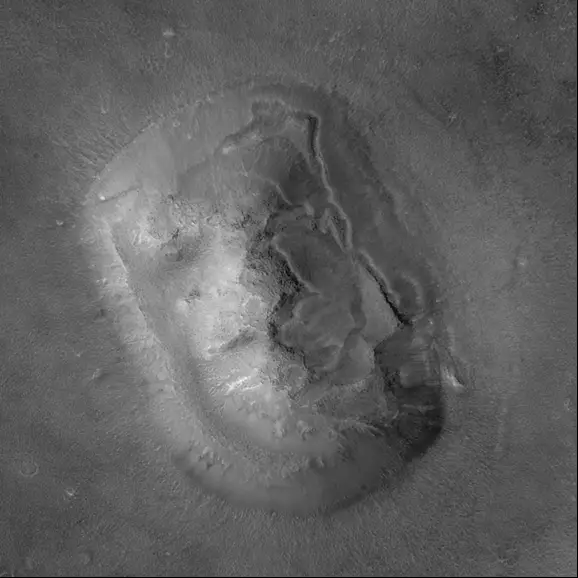
Face photo taken in 2001 by NASA / JPL / Malin Space Science Systems
The Mars Global Surveyor station in 2001 photographed the Face with a different resolution-14 m / pixel, proving that the previous photo caused unnecessary illusions. And in 2007, an even better image was obtained with a resolution of 30 cm/pixel, where the Martian hill does not look like a face at all. After that, the passions subsided, and the scientists explained to their opponents that there was no message to us from the ancient civilization of Mars.
However, independent researchers do not believe them. One of them is Mark J. Smith. Carlotto. He is an aerospace engineer with over 30 years of experience working with remote sensing satellite images in signal and image processing, pattern recognition, and application development. He has a Ph. D. in electrical engineering from Carnegie Mellon University since 1981 and has published more than 100 technical articles and written 6 scientific books
Dr. Carlotto studies anomalous phenomena, including unusual features on the Moon, Mars, and in space. His book, The Martian Enigmas, details the analysis of images of the Face and other possible artificial objects on Mars. His work has been featured in the New Scientist, Omni, and Newsweek, and he has appeared on numerous television programs, including Carl Sagan's "Cosmos, " " Observations, and"History."
I have listed the achievements of Carlotto in order to show you that this is not an ordinary "couch-based expert" who looks at photos and pictures on the Internet, but a fairly well-known person. Next, we will talk about the proofs that he cites.
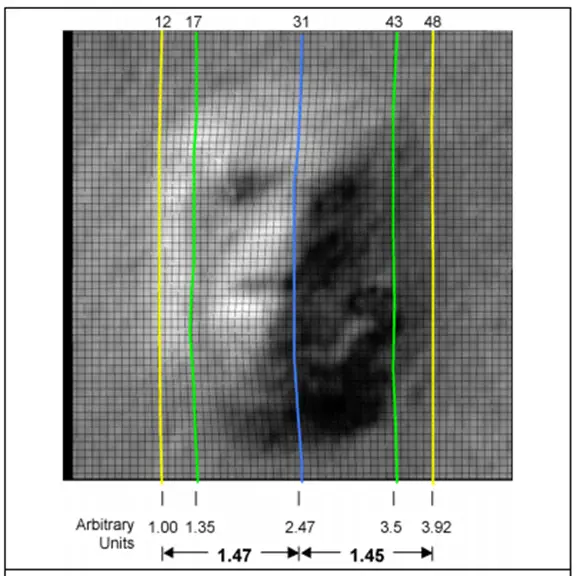
The edges of the base and platform, as well as the centerline, are outlined in an ortho-transformed 70A13 with the coordinate system (top) and the corresponding MGS coordinate system (bottom). Source http://carlotto.us/newfrontiersinscience/Papers/v01n01a/v01n01a.pdf
On April 8, 2001, the Mars Global Surveyor (MGS) was able to obtain a fully illuminated, high-resolution image of a 'Face on Mars' for the first time. As in the previous MGS images, at first glance, it appears to be a highly blurred natural formation. However, analysis of the new image shows that the object has a high degree of symmetry in two directions. Using repeatable geometric designs based on well-defined features that correspond to a consistently expressed geometric model based on rectangles having a long side to a short side in the ratio of 4/3, that is, rectangles diagonally divided in half into 3-4-5 right triangles. The new image clearly shows that the right (eastern) side of the Face is covered with sand. The depth of the sand seems sufficient to cover some of the details, and explains the apparent lack of facial symmetry.
In his article (the link is under the pictures), he writes:
Carlotto tested NASA's claim about the play of light and shadow using the TASC algorithm, which calculates a three-dimensional model of a face from available images, and also applied the 3D model to render synthetic images at various simulated sun angles and viewpoints. The simulation results proved that the "Face on Mars" retains its appearance in a wide range of imaging conditions and is not an optical illusion.
Published in the journal Applied Optics. In general, the article is quite interesting, but very large, because it is supplemented with scientific calculations with calculations of the angles of symmetry not only of the Face but also of other objects in Cydonia. So I chose only the most evidence-based.
Figure 5 shows an ortho-transformed image, offset so that its center coincides with the intersection of the horizontal and vertical axes of symmetry. This point is located in the center of the circular element, which looks like a small depression on the surface. The lateral axis of symmetry (the vertical line) passes through this and three other more or less regular circular elements.
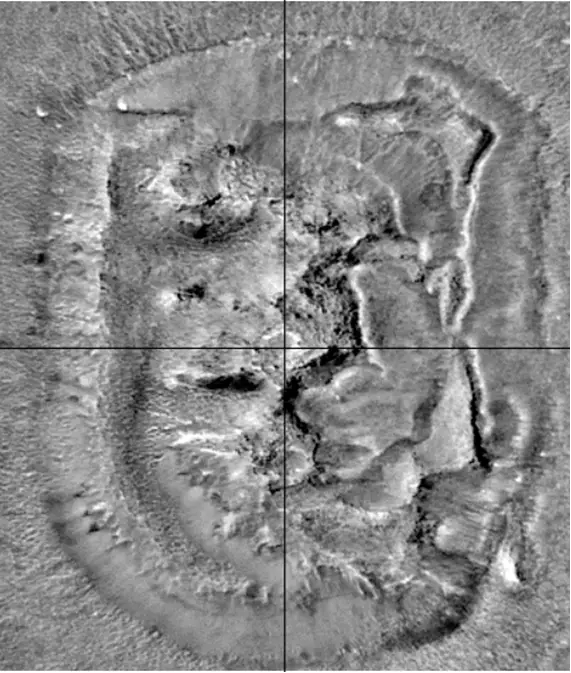
Figure 5. Orthorectified image with vertical and horizontal axes of symmetry. The axes intersect in the center of a small circular depression. Source http://carlotto.us/newfrontiersinscience/Papers/v01n01a/v01n01a.pdf
It can be seen that the Face consists of a raised platform defined by a beveled edge. Examination of the shape of the lower-left edge of the platform base shows that it corresponds to a conic section, specifically to the segment from the ellipse of eccentricity ~ 0.22 (Figures 8 and 9).
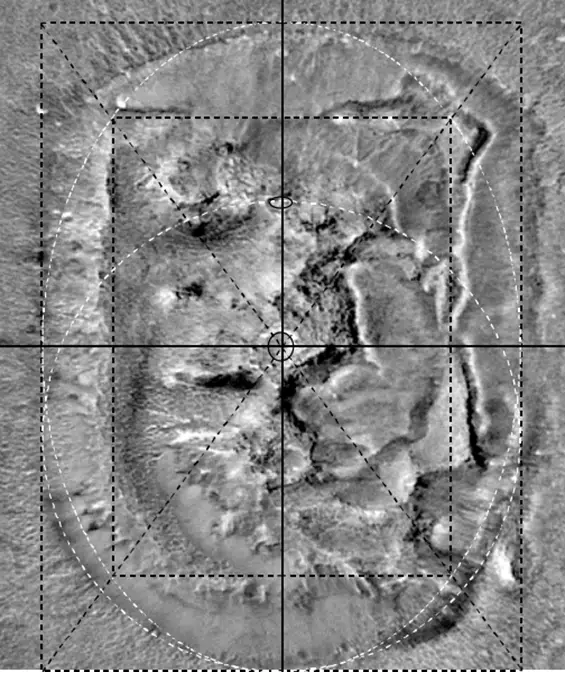
Figure 8. Geometric design of the inner and outer 4-3 rectangles.
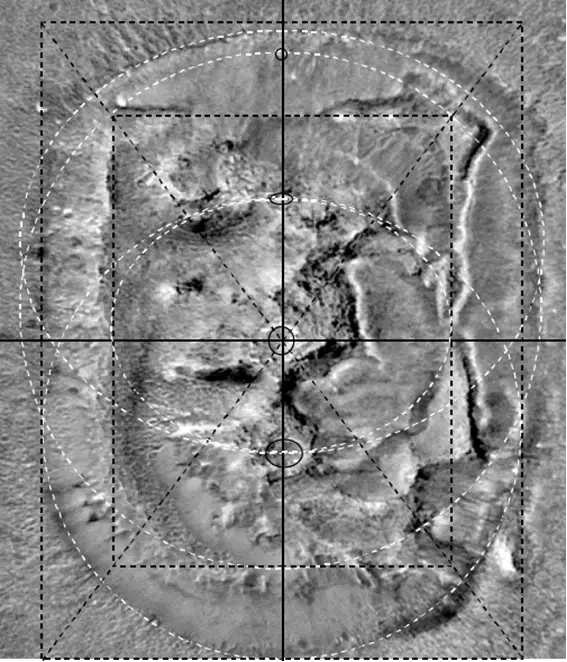
Figure 9. Additional support for 4-3 rectangles (see Figure 10 for overlays).
The location and distance between elements a-c determine 4-3 rectangular geometries of the resulting face model (Figure 10).
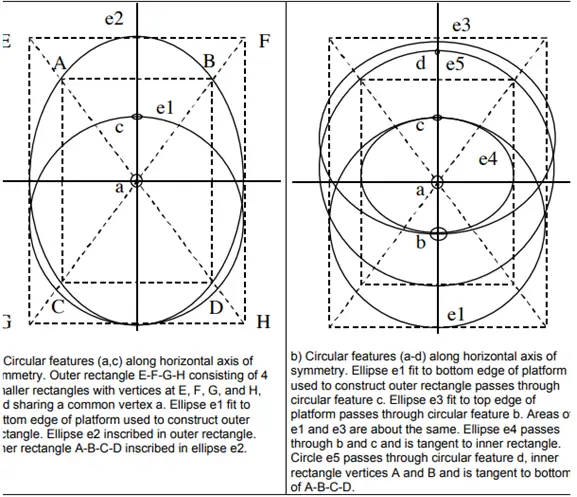
Figure 10. Overlay shapes in Figures 8 and 9.
The intersection of the horizontal and vertical axes of symmetry and the centers of the rectangles lie within a. The intersections of the ellipses e1 and e3, which limit the edges at the base of the platform and the horizontal axis of symmetry falls inside c and b. The center-to-center ratio of the a-b / a-c distances is approximately 4/3 with an accuracy of 3% (Figure 14).
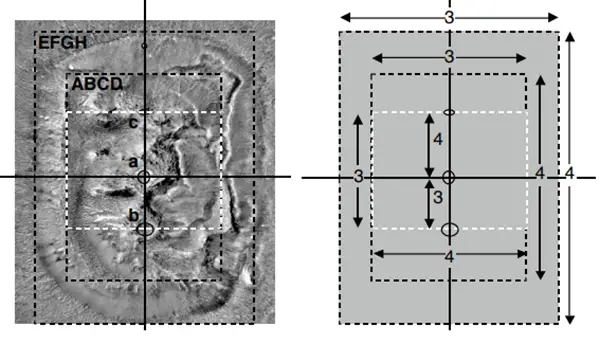
Figure 14. The shape of the face corresponds to the basic geometry.
To confirm the statistical significance of the obtained model, Carlotto calculated the probability that this configuration of functions is non-random. As a result, it is determined that the chances where three points lie in round areas of size a, b, and c are random are 1 in 1000000. This means only one thing there is no chance in this case.
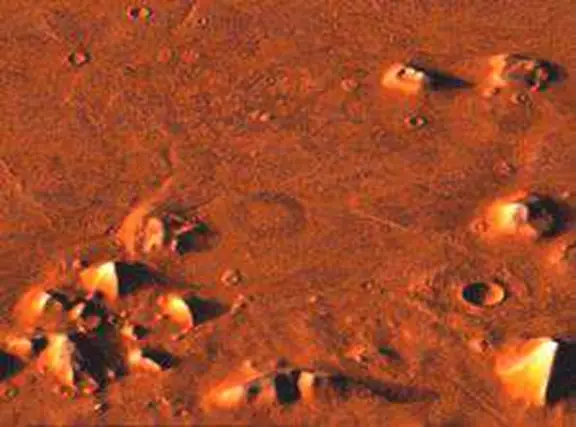
Kidonia district. "Face on Mars" (top right) and other pyramids. Three-dimensional reconstruction of M. Carlotto, based on photographs of the "Viking" Author: NASA
Therefore, NASA's explanation of the artificiality of the "Face on Mars" after the evidence presented by Mark J. The Carlotto become not only unfounded but simply unfounded. Moreover, the presented calculations of an independent researcher prove that the shape of the object corresponds to the parameters of the correct pyramid. Although it looks like this today because of erosion and deposition of rocks.
All this rejects the official version of the space agency about the natural terrain of this area of Mars.
About author:
Serg Toporkov Ufologist, Ph.D., blogger, I go on my own expeditions for UFOs. I use scientific methods to investigate the UAP phenomenon. Write to me |
Related tags:
Mars Cydonia face on mars engineer Calculations space NASA photo Viking-1Random UFO or conspiracy article
Military technology of the gods
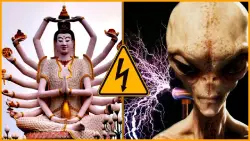 The gods created the conditions for life on the planet, and then intelligent life itself. And then came the heyday of the so-called high-tech civilization of the gods. Now we find traces of this civilization everywhere on our planet.
The gods created the conditions for life on the planet, and then intelligent life itself. And then came the heyday of the so-called high-tech civilization of the gods. Now we find traces of this civilization everywhere on our planet.
